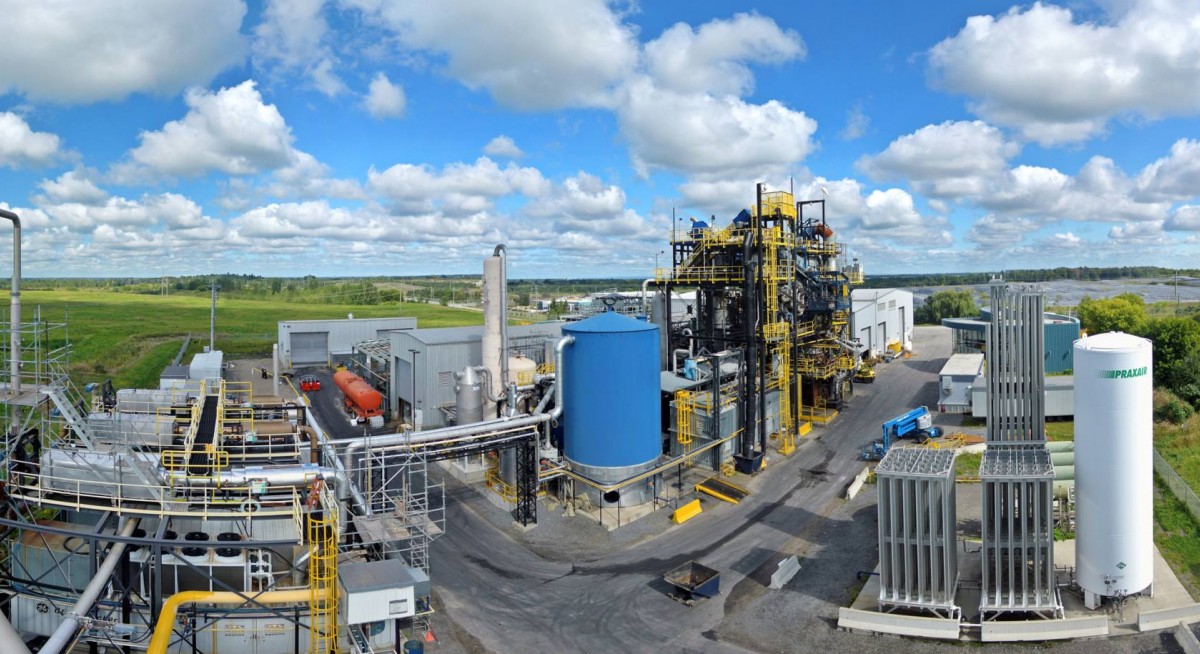Yet, there may be an impetus to resolve this seemingly unresolvable problem. In trying to develop new methods of producing hydrogen to power the future economy, Omni Conversion Technologies (Omni CT) has discovered a way to convert trash into fuel. Suddenly, the world’s mountains of useless refuse and overflowing landfills are starting to look like goldmines.
According to CEO Rod Bryden, the firm’s technology uses a patented process that converts waste into OmniSyngas, which can subsequently be used to produce green hydrogen and other biofuels. Its Omni200 Gasification and Plasma Refining System (GPRS) is a “complete integrated system” that can convert 200 tonnes of waste daily. The solution, says Bryden, can be easily scaled up by using multiple units.
OmniSyngas is a clean, consistent, tar-free synthesis gas — a fuel gas mixture containing hydrogen, carbon monoxide and some carbon dioxide that can be used as an intermediary in producing synthetic natural gas. It has the correct chemical composition to allow for the creation of hydrogen at the lowest electricity input per tonne of hydrogen produced. The carbon dioxide is separated for use or sequestration.
“Unsorted non-recyclable municipal waste is ideal for GPRS, which produces low or negative carbon footprint. The biogenic portion of the municipal solid waste is diverted from landfill where it would breakdown and release methane. Methane is 23–28 times worse for the environment than carbon dioxide is,” explains Bryden. Residential waste is an ideal feedstock for hydrogen to be produced in this way.
And this would also reduce the amount of electricity used to make green hydrogen too. The main challenge facing electrolysis for green hydrogen, says Bryden, is the need for massive amounts of additional renewable energy. BloombergNEF estimates that generating enough green hydrogen to meet 24% of our energy needs in 2050 will need more electricity than the world generates today.
Now, the promise of this technology has not gone unnoticed. Chris Larsen, co-founder of Larsen Lam Climate Change Foundation and former Ripple CEO, has committed US$35 million to Omni CT’s first-of-its-kind waste-to-hydrogen plant in California, which will be able to produce up to 5,000 tonnes of carbon-negative hydrogen per annum from 200 tonnes of unsorted, non-recyclable garbage per day. California sees 40 million metric tonnes of municipal solid waste discarded into its landfills in 2019.
“We launched The Larsen Lam Climate Change Foundation this year to support companies, projects, and technologies with great promise to significantly help the climate fight. Omni CT is our first project funded, and we’re looking forward to bringing this technology to market for the first time in California,” Larsen tells The Edge Singapore. He sees the foundation’s philanthropy helping to finance emerging technologies, which may be met with scepticism from investors who may be unwilling to put up a significant investment with low return on investment visibility.
There are significant public and private use cases for this technology. Larsen sees the hydrogen generated from this solution powering around 550 buses more affordably than using gasoline or diesel. Bryden reports significant demand coming from the refinery business due to the Low Carbon Fuel Standard (LCFS), which is designed to reduce the carbon intensity of the transportation fuel pool and provide a range of low-carbon and renewable alternatives to reduce petroleum intensity and improve air quality.
Southeast Asia presents a significant opportunity for Omni CT. With the urban population seen to rise to 373 million by 2030 from 280 million in 2017, the firm sees the region’s trash output rising. On top of having to deal with the trash produced by its own population, the region is also struggling to absorb waste imported from other countries as well; plastic waste imports surged 171% between 2016 and 2018 to over 2 million tonnes according to a Greenpeace report.
“We see potential for this technology to be scaled globally, particularly in places like Asia where renewable energy is limited,” says Larsen. He sees Singapore as a particularly viable location for this technology to be deployed due to its limited supply of renewable energy. With Pulau Semakau, Singapore’s only landfill, expected to be fully filled by 2035, the ability to dispose of trash and generate renewable energy simultaneously could prove an attractive proposition.
Photo: OMNI CT




